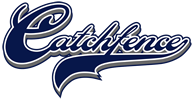 SONOMA, Calif. – On a crisp Sunday morning at Sonoma Raceway, before the marine layer gave way to brilliant sunshine, the clouds lay heavy over the NASCAR Tech Hub powered by Microsoft hospitality area between Turns 4 and 7, the highest point of the race track.
SONOMA, Calif. – On a crisp Sunday morning at Sonoma Raceway, before the marine layer gave way to brilliant sunshine, the clouds lay heavy over the NASCAR Tech Hub powered by Microsoft hospitality area between Turns 4 and 7, the highest point of the race track.
But the clouds were an appropriate metaphor, because one particular cloud—in this case Microsoft’s Azure Cloud—is an integral component of the race management application that reflects the next step in the dynamic partnership between NASCAR and Microsoft.
“This partnership with Microsoft is a couple of years old, and we’ve done some really incredible things together,” NASCAR executive vice president and chief global sales and marketing officer Steve Phelps said as a preface to the unveiling of the race management application to a group of the best and brightest from the Silicon Valley tech industry.
“A lot of times, people think about NASCAR, and they don’t think about innovation and technology—and they should. So when you think about NASCAR, and you think about competitive racing and side-by-side racing, and the spirit of competition that exists, for sure think about community. But I want you to think about technology and innovation, because that’s at the core of what NASCAR is.”
The race management application is the second phase of a partnership that has already produced a streamlined mobile inspection system.
With the race management application, the NASCAR/Microsoft partnership moved from the officiating trailer to race control, with some critical innovations. First, the system gives the race director and others in race control a convenient, efficient overview of the data essential to the conduct of a race, all accessible from the same screen.
The main screen features a track diagram that shows positions of the cars as they circulate. Race control officials can isolate cars by category—lead lap, for example—and access data that might include the lap of last pit stop, type of pit stop (e.g., two tires) and predicted lap of next pit stop.
When a caution occurs, the new application will cut the time necessary to re-order the field and allow a return to green-flag racing more quickly.
Second, the app maintains historical records of every second of every race, accessible and viewable through the cloud.
“We used to have six or seven different applications, and you’d be fumbling through four different laptops,” said Betsy Grider, NASCAR technology development managing director. “People have specific different roles that they’re playing in their specific chair in race control, and they’d be honed in on their piece.
“But you didn’t necessarily have a view that the series director could look across everything in real time and, more importantly, go back and look historically at what happened at (a particular) moment. Now they can do that.”
Not everyone in race control will have access to the same data, just the data necessary for a particular area of responsibility.
“The race management app was a series of problems that were not necessarily related to one another that we gave them one pane of glass to manage through,” said Anthony Morgante, Microsoft’s director of business development—sports. “It feels like it’s one app addressing one thing, but it’s really addressing several things behind the scenes.
“In the old world, it was different screens from different systems and different log-ins. Now a lot of that is consolidated, so it’s one view. And it’s also role-based. If I’m the race director, I have uber-access. I get to see all of it. If I’m somebody else, I may have less access.”
The historical aspect of the race management app is likely to shorten conversations with crew chiefs who disagree with a certain call during the race.
“When a team or a crew chief has a question about something that happened on the track,” Grider said, “they can go back, pull it up and say, ‘Here’s where you were at that time,’ and have a conversation about it in a way they couldn’t before when it was just the real-time separate apps.”
And through Microsoft’s Azure Cloud technology, NASCAR executive vice president and chief racing development officer Steve O’Donnell and his team can review a race that just happened on the plane ride home.
In a long-term view, certain aspects of the race management app may be rolled out to race teams, media and fans.
“That’s the vision,” Grider said. “We wanted to make sure we really got it right for professional use first. We know fans really want us to get back to racing quickly, but now that it’s coming to life, and we can use it operationally, then we’re thinking about how we could share this with the teams, and with broadcasters, and with the fans.
“The next generation of NASCAR Mobile is something we’re brainstorming about with some of the smart folks from Microsoft and the tech industry who are out here this weekend.”
Source: Reid Spencer / NASCAR Wire Service


















